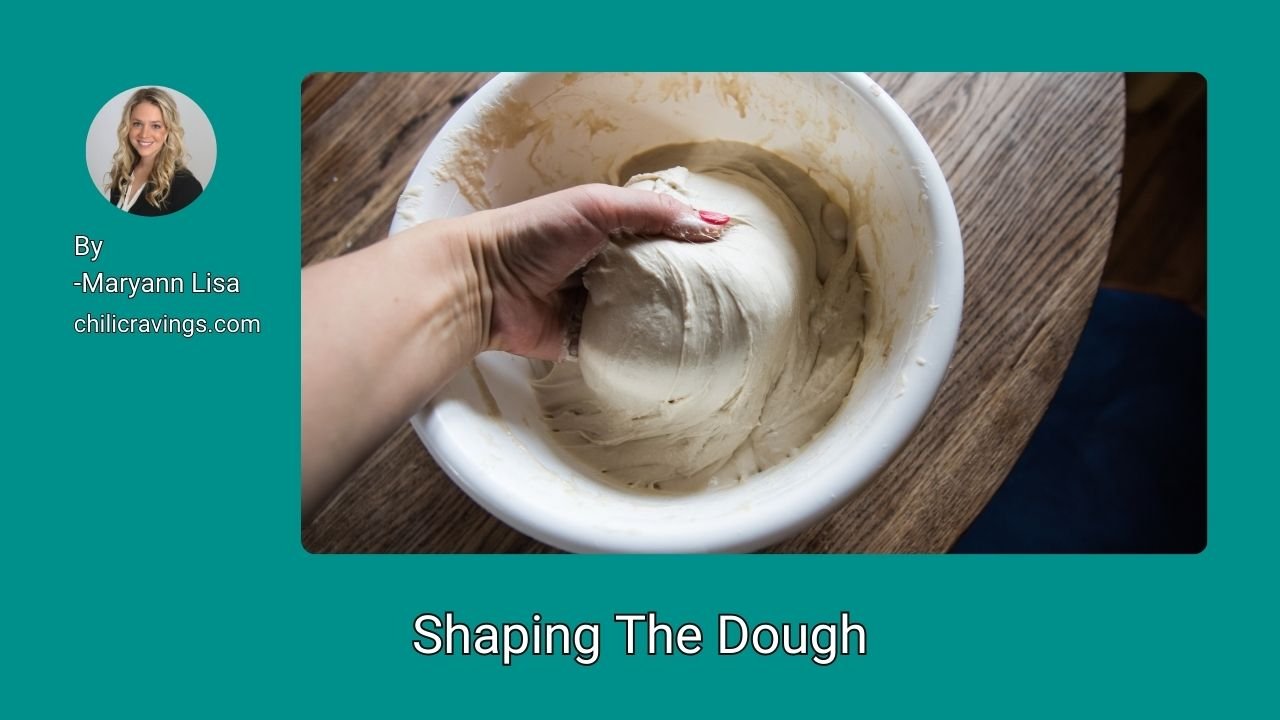Warm sourdough bread is a delightful treat. Its crusty exterior and soft interior make it a favorite.
But baking the perfect loaf can be tricky. Sourdough baking is an art that requires patience and precision. Many home bakers struggle to achieve the ideal texture and flavor. This blog post aims to simplify the process for you. Whether you are new to baking or have some experience, these foolproof tips will guide you.
By following these tips, you will bake warm, delicious sourdough bread every time. Get ready to impress your family and friends with your baking skills. Let’s dive into the secrets of making perfect sourdough bread!
Choosing The Right Flour

Choosing the right flour for your sourdough bread is essential. The type of flour you use impacts the bread’s texture, flavor, and structure. Let’s explore the key aspects you need to consider.
Types Of Flour
Different flours bring unique qualities to your sourdough bread. Here are some common types:
- All-Purpose Flour: Versatile and widely available. It creates a balanced crumb.
- Bread Flour: Higher protein content. It gives bread a chewy texture.
- Whole Wheat Flour: Rich in fiber and nutrients. It adds a hearty flavor.
- Rye Flour: Distinct flavor and dense texture. Often used in combination with other flours.
Importance Of Protein Content
The protein content in flour affects the dough’s elasticity and strength. Here’s a quick guide:
| Flour Type | Protein Content |
|---|---|
| All-Purpose Flour | 10-12% |
| Bread Flour | 12-14% |
| Whole Wheat Flour | 13-14% |
| Rye Flour | 8-10% |
Higher protein content helps form gluten. This is crucial for the bread’s structure. Bread flour is ideal for a chewy texture. All-purpose flour works too but may result in a softer loaf.
Choose the flour that best suits your taste and texture preferences. Experiment with different types to find your perfect match.
Creating And Maintaining A Starter
Crafting warm sourdough bread begins with creating and maintaining a starter. Follow these five tips for perfect results. Mix flour and water, feed regularly, keep at room temperature, watch for bubbles, and use the starter weekly.
Creating and maintaining a sourdough starter can seem daunting. But with a few basic steps, anyone can do it. A sourdough starter is the heart of your bread. It brings life and flavor to your loaf.
Starter Ingredients

To start, you need just two ingredients: flour and water. Use unbleached all-purpose or whole wheat flour. Tap or filtered water works well. Avoid chlorinated water. It can harm the natural yeast.
Feeding Schedule
Feeding your starter is crucial. Start by mixing equal parts flour and water. Do this every 24 hours. After a few days, bubbles should appear. This means your starter is active. Continue feeding it daily. For a mature starter, feed it twice a day. Morning and evening work best. Always discard half before feeding. This keeps your starter healthy and active. Remember, a happy starter leads to delicious sourdough bread. With patience, your starter will thrive. “`
Perfecting The Dough
Perfecting sourdough dough can be tricky. But with the right tips, you can get it just right. Here are two key steps to ensure your dough turns out perfect every time.
Mixing Techniques
Mixing the dough is a crucial step. Start by combining your flour and water in a large bowl. Let it sit for 30 minutes. This rest period is called autolyse. It helps the flour absorb water and start developing gluten.
After the autolyse, add your starter and salt. Mix thoroughly until combined. For better results, use the stretch and fold method. Every 30 minutes, stretch the dough and fold it over itself. Do this 4-6 times.
| Step | Action |
|---|---|
| 1 | Combine flour and water |
| 2 | Rest for 30 minutes (autolyse) |
| 3 | Add starter and salt |
| 4 | Mix thoroughly |
| 5 | Stretch and fold 4-6 times |
Kneading Tips
Kneading helps develop gluten in the dough. Start by turning your dough onto a lightly floured surface. Use the heel of your hand to push the dough away from you. Fold it back over itself and give it a quarter turn.
Repeat this process for 10 minutes. The dough should become smooth and elastic. If the dough is too sticky, add a bit more flour. But be careful not to add too much. Too much flour can make the dough tough.
To check if the dough is ready, use the windowpane test. Stretch a small piece of dough between your fingers. It should stretch thin without breaking. If it breaks, knead for a few more minutes.
- Turn dough onto floured surface
- Push with heel of hand
- Fold and turn
- Repeat for 10 minutes
- Use windowpane test
Mastering The Fermentation Process
Creating warm sourdough bread starts with the fermentation process. This step is vital. It develops the bread’s flavor and texture. Mastering fermentation can be tricky but rewarding. Let’s dive into two key stages: bulk fermentation and shaping the dough.
Bulk Fermentation
Bulk fermentation is the first rise. After mixing your dough, let it rest. This period allows the yeast to work. Keep the dough in a warm place. Ideal temperatures are between 75-85°F. Check the dough often. It should double in size. This step usually takes 3-4 hours. Don’t rush it. Proper fermentation gives your bread a rich flavor.
Shaping The Dough

Once bulk fermentation is complete, it’s time to shape the dough. Gently turn the dough out onto a floured surface. Handle it with care. You don’t want to knock out all the air. Shape it into a round or oval loaf. This helps it rise evenly. Let the shaped dough rest again. This is called the final proof. It usually takes 1-2 hours. Your dough is ready to bake when it springs back slowly after a gentle poke.
Baking For Optimal Results
Achieving the perfect sourdough bread requires attention to detail, especially during baking. The techniques you use can make a big difference in the crust and crumb. Let’s dive into some key tips to ensure your sourdough turns out just right.
Preheating The Oven
Always preheat your oven before baking. This ensures consistent heat, which is crucial for a good rise. Set the temperature to what your recipe recommends. Usually, this is around 450°F (230°C). Allow the oven to reach this temperature before placing your bread inside.
Use an oven thermometer to check the temperature. Sometimes, ovens can be off by a few degrees. A preheated oven helps in developing a nice crust and proper oven spring.
Steam Techniques
Steam plays an important role in baking sourdough. It helps in forming a crispy crust. There are a few ways to create steam in your oven.
One method is to place a baking tray filled with water at the bottom of the oven. Another option is to spritz water on the oven walls right after putting the bread inside. Be quick to avoid losing heat.
Covering the dough with a lid or a large bowl for the first part of baking can also trap steam. This method is often used with Dutch ovens. Remove the lid halfway through baking to allow the crust to form.
Troubleshooting Common Issues
Baking sourdough bread can be challenging. Sometimes, things don’t go as planned. But don’t worry! We have tips to help you fix common problems. These solutions will help you achieve that perfect loaf every time.
Dense Bread Solutions
Dense bread often happens due to under-kneading. Make sure to knead your dough well. This helps gluten develop. Another reason might be too little hydration. Add more water to your dough. It should be sticky but manageable. Also, check your oven temperature. It should be hot enough to give a good rise.
Another tip: let your dough rise longer. Sometimes, it needs more time to ferment. Patience is key. Use these solutions, and your bread will be lighter and fluffier.
Sourdough Not Rising
If your sourdough isn’t rising, your starter might be weak. Feed your starter more frequently. This will make it stronger and more active. Temperature also affects rising. Keep your dough in a warm place. Ideal temperature is around 75°F to 85°F (24°C to 29°C).
Another factor is the flour you use. Try using different types of flour. Whole wheat or rye flour can boost activity. Finally, make sure your dough isn’t too wet or too dry. Aim for the right consistency. These tips should help your sourdough rise beautifully.
Storing And Serving Sourdough
Sourdough bread has a unique taste and texture that many people love. To enjoy it fully, you need to store and serve it correctly. Proper storage keeps it fresh longer. Serving it well brings out its best flavors.
Proper Storage Methods
Store sourdough bread in a cool, dry place. Avoid putting it in plastic bags. Plastic traps moisture, making the bread soggy. Instead, use a paper bag or a bread box. These allow air to circulate, keeping the crust crisp.
If you need to store it for more than a few days, freeze it. Wrap it tightly in plastic wrap, then in aluminum foil. This prevents freezer burn. When ready to eat, thaw it at room temperature. Reheat it in the oven for a fresh-from-the-bakery feel.
Serving Suggestions
Warm sourdough tastes best. Reheat it in the oven at 350°F for 10 minutes. This brings out its fresh-baked aroma and taste.
Serve sourdough with quality butter or olive oil. The rich flavors complement the tangy bread. For a special treat, try it with cheese. Aged cheddar or brie pairs well with sourdough.
For breakfast, toast slices and spread with jam or honey. It makes a delicious and satisfying start to your day. Or use it for sandwiches. Its firm texture holds up well with hearty fillings.
Health Benefits Of Sourdough
Warm sourdough bread is not only a treat for the taste buds but also a healthy addition to your diet. Packed with nutrients and digestive benefits, sourdough bread is an excellent choice for those looking to improve their overall health. Let’s delve into the health benefits of sourdough bread.
Nutritional Value
Sourdough bread offers a wealth of nutritional benefits that make it a superior choice compared to regular bread. Here are some key nutrients found in sourdough bread:
- Rich in B vitamins
- High in minerals such as iron, zinc, and magnesium
- Contains antioxidants
- Low in sugar
- High in protein
The fermentation process enhances the availability of these nutrients, making them easier for the body to absorb. This means you get more nutritional value from each slice of sourdough bread.
Digestive Benefits
Sourdough bread is easier on the digestive system due to its natural fermentation process. Here are some digestive benefits of sourdough bread:
- Prebiotics: Sourdough contains prebiotics that promote gut health.
- Lower gluten content: The fermentation process reduces gluten, making it easier to digest.
- Improved digestion: The natural acids in sourdough help break down food more effectively.
These benefits make sourdough bread a great option for those with digestive issues or anyone looking to improve their gut health.
Frequently Asked Questions
How Can I Make Sourdough Bread Warm?
To warm sourdough bread, preheat your oven to 350°F. Wrap the bread in aluminum foil and heat for 10-15 minutes. This will make the bread warm and fresh.
Why Is My Sourdough Bread Dense?
Dense sourdough bread usually results from under-proofing. Ensure your dough rises adequately during the fermentation process. Additionally, make sure to knead the dough properly to develop gluten.
Can I Freeze Sourdough Bread?
Yes, you can freeze sourdough bread. Wrap it tightly in plastic wrap, then place it in a freezer bag. It will last for up to three months.
How Do I Store Sourdough Bread?
Store sourdough bread at room temperature in a paper bag or bread box. Avoid plastic bags as they trap moisture, making the bread soggy.
Conclusion
Baking warm sourdough bread can be simple with the right tips. Follow these five foolproof tips to enjoy fresh, delicious bread every time. Start with a good starter, and be patient during the process. Practice makes perfect, so don’t get discouraged by initial failures.
Keep your kitchen tools clean and your ingredients fresh. Soon, you’ll be baking sourdough like a pro. Enjoy the journey and the tasty results. Happy baking!


